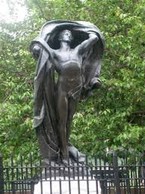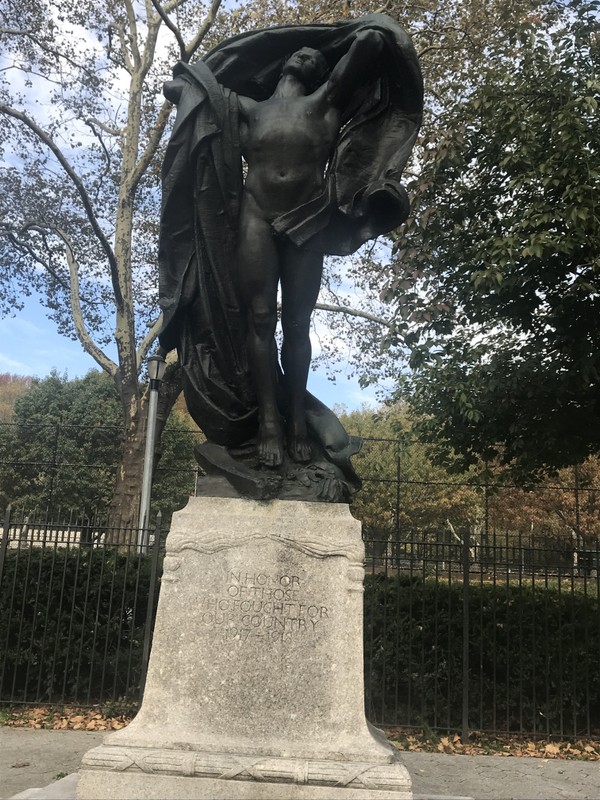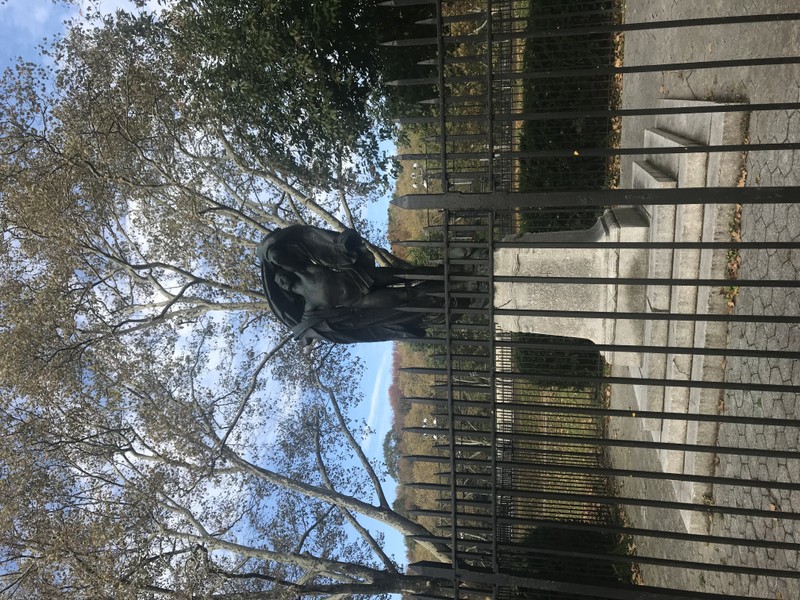Dawns of Glory
Introduction
Text-to-speech Audio
Images
Dawn of Glory -

Close Up

Full Scope of Statue


Backstory and Context
Text-to-speech Audio
In April 1917, the United States declared themselves apart from the Allies with Britain and France against the Central Powers. Due to German submarines, that attacked and sunk United States ships filled with artillery to Britain, ultimately having the United States enter the War after the fact. Pietro Montana created symbolism within his sculpture. It's a physical representation of the fallen soldiers' and that their spirits are heading towards glory in the afterlife. 10,000 people showed up for the unveiling of "Dawns of Glory" on July 13, 1928. World War I took a toll on the United States with 116,516 deaths out of the 4.7 million men that served. Disease and sickness killed approximately 320,000 soldiers. Due to American soldiers being on European soil, they caught the influenza epidemic that manifested in 1918, killing around 50 million people worldwide in eighteen months. Influenza hit all participants in the War but hit the United States uniquely because it hit when it was during the United States greatest campaign in the War. In the beginning of the epidemic, more than 1 million men caught the sickness and the Navy recorded 5,000 deaths from pneumonia. The United States entered the War when the Allies were in chaos on the European fronts. Overall, the United States fought in 13 campaigns during the Great War. Most of the battles lasted one to three months. From influenza epidemic, death by artillery to chemical weapons, United States lost a lot of brave soldiers. This monument is to commemorate those who have fought for the War.
Bushwick, Brooklyn was home to many Italian immigrants starting from the late 1800s as immigration would be at an all-time high before the start of the World War. Many Italian Americans fought during the War and had the option to fight for Italy who were part of the Entente. In the beginning of the Italian immigration to the United Staes, Italians were seen as uneducated, had problems learning the English language and their negative stereotype of the Mafia. But the War would help the immigrants and America find a balance of acceptance. Italian immigrants who fought for the Allies showed acts of heroism. When the War ended it would spark a new beginning for the new era of Italian immigrants. Hence, Dawn of Glory was a symbolism for all the soldiers who fought in the War, especially Italian immigrants who settled down in Bushwick, Brooklyn during their immigration era.
Sources
Byerly, Carol R.: War Losses (USA) , in: 1914-1918-online. International Encyclopedia of the First World War, ed. by Ute Daniel, Peter Gatrell, Oliver Janz, Heather Jones, Jennifer Keene, Alan Kramer, and Bill Nasson, issued by Freie Universität Berlin, Berlin 2014-10-08
“Dawn of Glory .” CultureNOW - Dawn of Glory: Pietro Montana and NYC Department of Parks and Recreation Art in the Parks, Culture Now , www.culturenow.org/index.php?page=entry&permalink=05125.
Historian , Oswego. “The Impact of World War I and World War II on Italian Americans in Oswego, New York: A Preliminary View.” Oswego Historian, SUNY Oswego , 19 July 2011, oswegohistorian.org/2011/07/impact-world-war-1-and-world-war-2-italian-americans-oswego-new-york/.
NYC Department of Parks and Recreation Art
Mason Resele-Tiden (November 1, 2017)
Mason Resele-Tiden (November 1, 2017)
